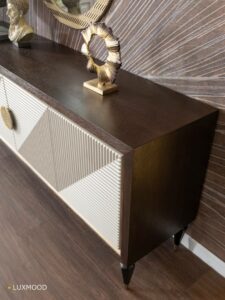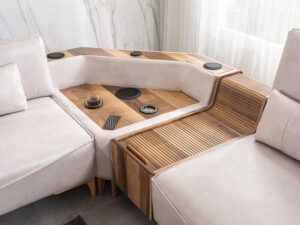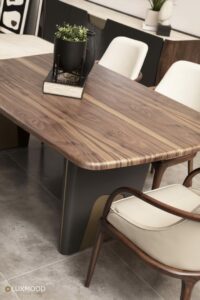Preserving the Beauty: A Guide to Protecting Wooden Furniture
Wooden furniture holds a timeless charm that can transform any space into a warm and inviting haven. To ensure your cherished pieces remain stunning for years to come, proper protection and care are essential. In this guide, we’ll explore effective strategies to safeguard your wooden furniture from wear, tear and the ravages of time.
1. Regular Dusting and Cleaning:
Dust and dirt can accumulate on the surface of your wooden furniture, leading to scratches and a dull appearance. Regularly dust your furniture using a soft cloth or a feather duster. For deeper cleaning, use a mild wood-specific cleaner and a soft damp cloth. Avoid harsh chemicals that can strip the wood’s natural finish.
2. Protective Coatings:
Applying a protective coating is one of the most effective ways to shield wooden furniture. Wax, polish, or wood sealants can help create a barrier against moisture, spills, and minor scratches. Be sure to choose a product that matches the type of finish your furniture has—whether it’s matte, satin, or glossy.
3. Avoid Direct Sunlight:
Exposure to direct sunlight can cause wooden furniture to fade and lose its luster over time. Position your furniture away from windows or use curtains and blinds to filter the sunlight. If you can’t avoid sunlight entirely, consider using UV-protective films on windows to minimize its impact.
4. Use Coasters and Mats:
To prevent water rings, stains, and scratches, always use coasters, placemats, and tablecloths when placing items on wooden surfaces. This simple habit can go a long way in maintaining the beauty of your furniture.
5. Humidity Control:
Wooden furniture can be sensitive to changes in humidity. Extreme dryness or humidity can cause wood to warp or crack. Use a humidifier or dehumidifier to maintain a consistent humidity level in your home, especially during seasonal changes.
6. Lift, Don’t Drag:
When moving your wooden furniture, avoid dragging it across the floor, as this can damage both the furniture and the flooring. Lift the furniture gently, and if necessary, use furniture sliders to minimize friction.
7. Repair and Maintenance:
Tackle minor scratches and dents promptly by using touch-up kits or markers that match the furniture’s color. Regularly inspect the furniture for loose joints or hardware and address any issues immediately.
8. Proper Storage:
If you need to store your wooden furniture for an extended period, choose a climate-controlled space to prevent damage from temperature fluctuations. Cover the furniture with breathable fabric to protect it from dust.
9. Professional Restoration:
For antique or valuable wooden furniture, consider consulting professionals for restoration and maintenance. They have the expertise to rejuvenate your pieces without causing further harm.
10. Respectful Usage:
Finally, the best way to protect your wooden furniture is to use it with care. Encourage your family and guests to treat the furniture gently and with respect, avoiding activities that could potentially damage the surface.

By implementing these practices, you can ensure that your wooden furniture maintains its elegance and charm, enriching your living spaces for generations to come. Remember, a little attention and care today can preserve the beauty of your cherished pieces well into the future.










